Natalie Wood appeared in 56 films for TV and the silver screen and received 3 Oscar nominations before turning 25.
------------------------------------------------------------------
Natalie Wood
-------------------------------------------------
Her real name was Natasha Gurdin, and she was born in San Francisco on Wednesday, July 20th, 1938, to Russian émigrés Maria and Nicholas Zakharenko (they had changed their last name to Gurdin before coming to America). Natalie has one sister, Lana Wood, who is younger. They have a half-sister, Olga Viriapaeff, who is older. When she was just 4 years old, Natalie made her film debut in Happy Land(1943), although she had less than 10 seconds of screen time. When she was 7, she was cast in a major role opposite the legendary Orson Welles in Mañana es vivir (1946). The following year, she starred as Susan Walker in one of the most famous films of all time, De ilusión también se vive (1947), which for many people has become a traditional viewing every Christmas. Natalie stayed very busy as a child actress and appeared in over 20 films, including El fantasma y la Sra. Muir (1947), Scudda Hoo! Scudda Hay! (1948), Vida de mi vida (1950).
When she was 16, Natalie got her big break when she was cast as Judy in Rebelde sin causa (1955), starring opposite 24 year old screen legend James Dean, and 16 year old Sal Mineo. Her performance earned her an Oscar nomination for Best Supporting Actress. The film was very popular and is now considered a classic. Both of her male co-stars in the film also died young under tragic circumstances, and the main cast has become known as the "tragic three," The following year, she played a small but crucial role in the classic western Centauros del desierto (1956), which starred John Wayne. Natalie was a rebellious teenager, started smoking and was romantically linked to much older men. Publicly, she dated Dennis Hopper and Elvis Presley, who were only a few years older. Discretely, Natalie (age 16) was involved with 43-year-old bisexual director Nicholas Ray, who did not face statutory rape charges because their affair was not made public knowledge until long after it ended. In the spring of 1957, Natalie started a relationship with actor Robert Wagner when she was 18 and he was 27. They married on December 28th of that year. Meanwhile, Natalie's career was suffering with flops like Marjorie Morningstar (1958). She and Wagner made a film together called Los jóvenes caníbales (1960), which also flopped.
In 1961 Natalie starred in two hit films. The first was Esplendor en la hierba (1961), a rural period drama in which she and Warren Beatty played teen lovers. Natalie received her second Academy Award nomination for her role, as Best Actress. The other film she made that year was West Side Story (1961), in which she played a Puerto Rican girl who falls in love with a member of her community's rival gang in New York. In June of that year, she filed for divorce from Wagner. Although he said that their careers conflicted with the marriage, biographer Suzanne Finstad wrote that she caught him "in a compromising position with another man." Their divorce was final in April 1962, and she began a relationship with Warren Beatty. Natalie's next two films were the musical La reina del Vaudeville (1962) and Amores con un extraño (1963), in which she played a young shopgirl who faces an unwanted pregnancy. The latter film earned her a third Academy Award nomination. Natalie was just 25 years old at the time, and to this day remains the youngest person to ever receive 3 Academy Award nominations. After this she starred in La pícara soltera (1964) and La carrera del siglo (1965), which were poorly received. She delivered some of the best work of her career by playing southern depression-era teens with big dreams in La rebelde (1965) and Propiedad condenada (1966), both of which co-starred Robert Redford and earned her Golden Globe nominations. Although they were not box-office hits, many consider the latter to be Natalie's greatest performance.
In her personal life, Natalie broke up with Warren Beatty then had a series of short-lived romances with older men, some of whom were married. She attempted suicide in November of 1966. Then, she began seeing a psychiatrist and, sadly, announced she was "semi-retiring" at just 28 years old. After three years away from acting, Natalie made a brief return with a role in the 1969 ensemble film Bob, Carol, Ted y Alice (1969). On Friday, May 30th, 1969, 30-year-old Natalie married British producer Richard Gregson after a year and a half of dating. He had been married before and already had two children.
On Tuesday, September 29th, 1970, Natalie gave birth to a daughter, Natasha Gregson (later Natasha Gregson Wagner). Ten months later, on August 1, 1971, she and Richard Gregson separated when she found out he was having an affair. Following their separation, Natalie dated politician Jerry Brown. However, she reunited with Robert Wagner on January 26, 1972. On Sunday, July 16, 1972, 33-year-old Natalie married for the third and final time, to 42-year-old Wagner in Malibu, just 3 months after her divorce from Gregson was finalized. The couple worked together in a TV movie called El asunto (1973) (TV), which marked Natalie's first acting role in over four years. On Saturday, March 9th, 1974, Natalie gave birth to her second child (and her only child with Wagner), daughter Courtney Wagner.
Meanwhile, Natalie turned down the role of Daisy in El gran Gatsby (1974), unfortunately. By 1975, while only in her mid thirties, Natalie was no longer being considered for plum film roles due to the fact that she had been offscreen for so long. The best roles were going to Jane Fonda, who was actually a year older than Natalie, despite the public's perception to the contrary. She finally appeared in another movie, Un detective curioso (1976), but it wasn't even widely released in theaters. By 1977, Natalie realized her career was in serious jeopardy. Over the next year, she signed on for one feature film and two made-for-TV movies.
In 1979, Natalie saw the release of three projects. "De aquí a la eternidad" (1979) was a miniseries costarring Kim Basinger and William Devane; it earned Natalie a Golden Globe Award. The Cracker Factory (1979) (TV) provided another meaty role for Natalie, but it was, after all, still just a TV movie. Meteoro (1979) was Natalie's first feature film in an entire decade (excluding Un detective curioso (1976), which wasn't widely released). However, it was not a comeback for her, as she only had a supporting role and the film was a huge flop both critically and commercially. Her next film, the 1980 sex comedy La última pareja (1980), was also a flop, even though Natalie gave a wonderful performance. The poor reception of this film couldn't have been much of a surprise, though, because Natalie had been off the radar for so long. It was a shame that she had done virtually no movies while in her 30s, because they should have been the prime years of her career.
Determined to re-ignite her film career, Natalie went to North Carolina in September 1981 to make Proyecto Brainstorm (1983), a compelling science fiction drama in which she and Christopher Walken played a husband-and-wife team of scientists who create a device that can record human thoughts. At 43, this marked the first time in 15 years (since she was 28) that Natalie had a serious starring role in a major film. She spent two months working on it before returning to L.A. for Thanksgiving break. Walked accompanied her.
On November 27, 1981, Natalie invited Walken to join herself, Wagner, and boat captain Dennis Davern on a boat trip to Catalina Island. The following day, they dined at a restaurant on Catalina where Natalie became very intoxicated. That night, the four of them returned to their yacht, the "Splendor". The rest is a mystery, and the stories about how she ended up in the water have been conflicting. On the morning of Sunday, November 29th, 1981, her body was found floating face down in the ocean. Rumors of foul play immediately surfaced, but no charges were filed and her death was declared an accidental drowning. She was 43 years old. She had not completed all of her scenes in Proyecto Brainstorm(1983). As a result, her character was written out of several scenes, while a stand-in and sound-a-likes were used to replace her in some crucial scenes. The film was finally released in the fall of 1983, to mixed reviews and bad box office. However, unlike the majority of Natalie's films, it has found a large audience on DVD.
Since Richard Gregson lived in Europe, Wagner got custody Natalie's daughter Natasha and raised her. He also cut off all contact with Natalie's family. In 1984, Lana Wood published the book "Natalie: a Memoir by Her Sister," in which she expressed her disappointment concerning Wagner's behavior.
Natalie had only outlived her father, Nick, by one year after he died of a heart failure in November 1980 at age 68. Her mother, Maria, never stopped grieving for Natalie and developed Alzheimer's disease. She died of pneumonia in Lana's home in 1998 at age 85.
Natalie does not have any grandchildren, as both Natasha and Courtney are childless. However, her only niece (Evan, who is Lana's daughter) has three children, so Natalie's lineage lives on in them.

























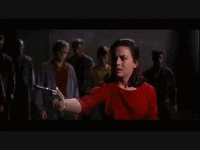























































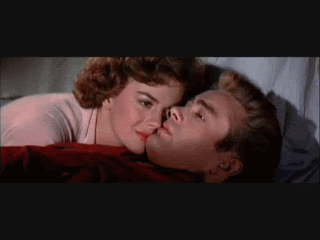






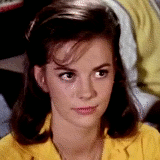



















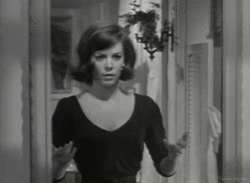


















.gif)


.gif)

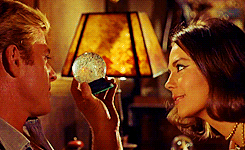




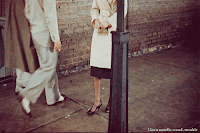


















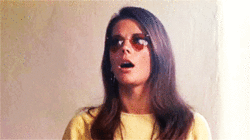



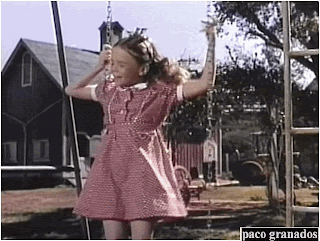










No comments:
Post a Comment